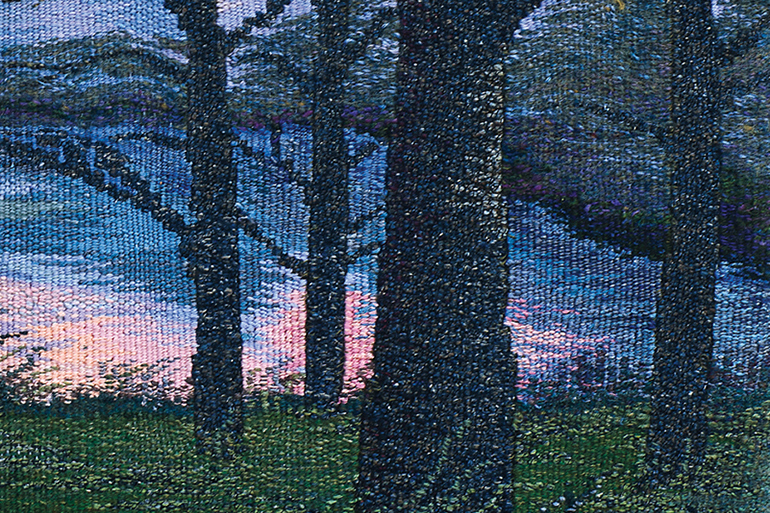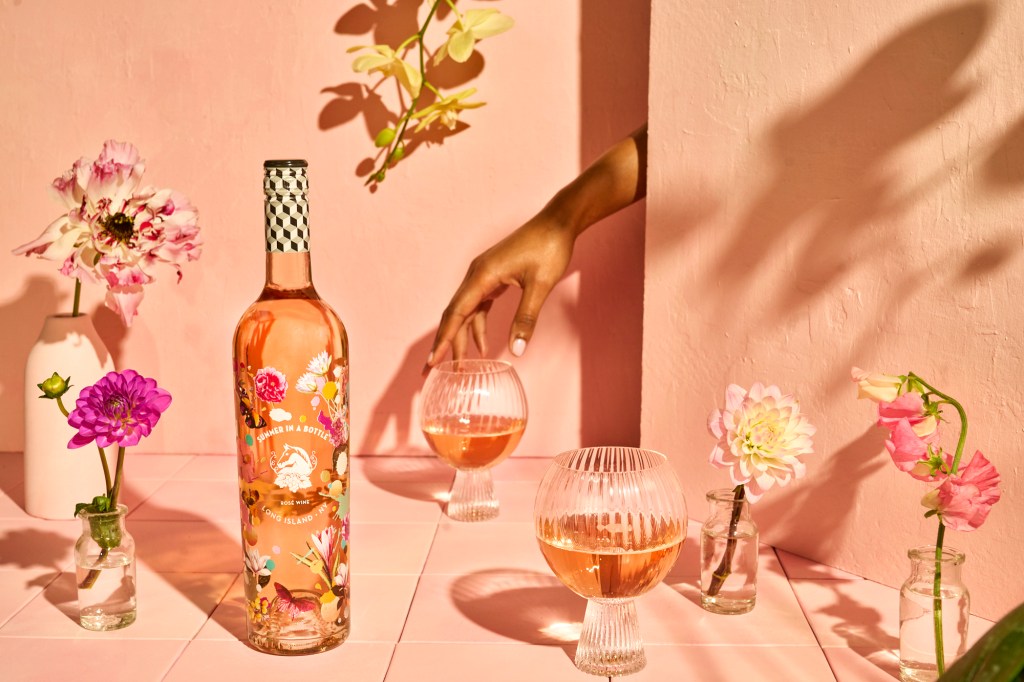Dan's Papers Cover Artist Pamela Topham Weaves 'Lise's Morning'

Pamela Topham’s tapestry art is intricately detailed and visually stunning. This week’s cover, “Lise’s Morning,” has an East End origin, like much of Topham’s work.

What is the inspiration for this piece?
A while ago, my friend KarenLise Bjerring sent me the most intriguing Christmas card, a photograph from her east-facing window. The sky is similar to mine, a mile away, but Lise lives on a lily pond with reflections, lily pads and mists. The card was not tossed out with the others, but hung around on the refrigerator, on my worktable. Last summer, I started a tapestry based on the photo.
When I was about a quarter done, I was struggling with the relationship between the tapestry and the photo. The piece was put aside for a few months. Usually I don’t work from photographs, as it tends to make me attempt to be too literal. Abandoning the piece was unlikely, and I don’t like to start a new piece and leave other work unfinished. So I had to face the dilemma. Putting the photograph aside, I sought to express the atmosphere, not the actual image. Then it became a conversation between the bare trees in front of the splendid sky.
Talk about your artistic process.
Sometimes there is a backlog of ideas for tapestries, other times I have to hunt for a place to begin. Usually there are multiple site visits—early morning or evening provide the best light. There are a variety of sketches, sometimes a few photographs. This information is compiled into a colored pencil drawing. The drawing is the basis for the tapestry. If it’s a large tapestry, I create a cartoon that is placed behind the warp where I weave on the loom. This is a basic, full-scale outline of the forms in the tapestry.
A few years ago, I wove tapestries from a memory—in a 24-foot wood sailboat in a gale in Block Island Sound that was trying to get into Montauk, but blown north. When considering tapestry, time is spent on the yarns for the colors and textures of the tapestry. Most of my wool comes from Australia, Norway and Sweden. The silk is dyed in Vancouver. Then, there is the yarn from Japan that is a work of art in itself! Typically, I weave with three to five fine yarns on the bobbin. This gives a subtle variety of texture.
What draws you to tapestry work?
I love the process, interpreting the landscape in textures and colors of yarns of silk and wool. The tools, handmade tapestry bobbins in a variety of woods, feel wonderful in my hands. Sometimes after working through a difficult design, I slip into a state in which magic happens. There is great satisfaction in artistically preserving the vulnerable eastern Long Island landscape.
How does living on Long Island inform your art?
We are surrounded by water. Water is in most of my East End tapestries—some are mostly water. Some tapestries are dedicated to farms. There is a six-foot “Sagaponack Tapestry” of farmland from Hedges Lane to the ocean. A series of Sagg Pond tapestries are recent and Accabonac Harbor was the basis for about 20 tapestries.
How did you get started doing art?
Art was always my inclination. As a child, I had an art “studio” in the attic of the house. My gifts were often art supplies. Tapestry weaving started after studying the extraordinary textiles while living in Guatemala.
If you were not an artist, what would you do?
This is hard to imagine. Since I am also a sommelier, maybe I would travel the world, tasting wine.
See more of Pamela Topham’s art at pamelatopham.com.




